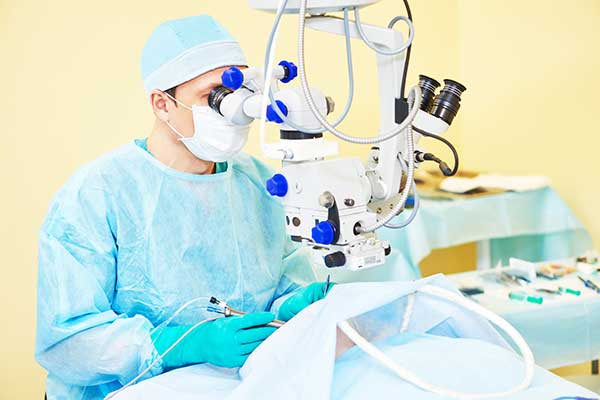A MULTITUDE OF TREATMENT OPTIONS
Over time many surgical procedures have been used to eliminate or iminimize the need for glasses. The following are the most common techniques:
Multi-Focal Lens Implant
In this procedure, an implant is put in the eye that produces clear vision at both distance and near. In clinical trials with newer implants, 80 percent of patients who’ve undergone this procedure did not have to wear glasses after having the multifocal implant in both eyes.
Astigmatic Implants
An astigmatism-correcting implant is inserted into the eye, in this procedure, to correct moderate to high amounts of astigmatism.
Clear Lens Extraction and Implant
The clear lens of the eye is removed surgically and an implant is inserted in its place that will correct far- or nearsightedness and/or astigmatism. Implants can used to correct high amounts of astigmatism or allow patients to read without bifocals or reading glasses.
Relaxing Incision (Astigmatic Keratotomy)
A surgical procedure in which a small incision is made in the cornea. The goal of this procedure is to reduce the amount of corneal astigmatism.
Radial Keratotomy (RK)
During RK, the oldest refractive surgical procedure, four or more radial incisions are made in the cornea. The aim of these incisions is to flatten or weaken the corneal power. Patients commonly complain of halos around lights, following RK, especially with night driving. Unpredictable and unstable outcomes have caused this procedure to be performed rarely these days.
A BETTER LENS, CLEARER VISION
What is Clear Lens Exchange?
Refractive Lens Exchange (RLE) is essentially the same as cataract surgery but is used exclusively for decreasing one’s dependence on glasses. RLE—sometimes also called Clear Lens Exchange (CLE), Clear Lens Extraction (CLE), or Refractive Lens Replacement (RLR)—is often an appropriate alternative to conventional Lasik.
In RLE the natural lens of the eye is removed by the same technique used for cataract surgery and replaced with a plastic intraocular lens (IOL). This is an “off label” use of lens implants, which by FDA guidance are only approved for use in cataract surgery. The replacement IOL is of a power to correct most, if not all, of the patient’s farsightedness or nearsightedness. RLE can correct astigmatism if a toric IOL is used. RLE can also correct for presbyopia, and in most cases, can eliminate the need for reading glasses if a multifocal IOL is used.


